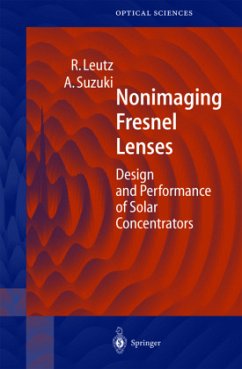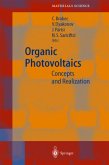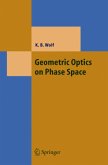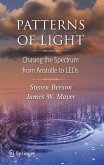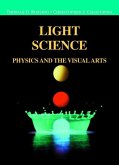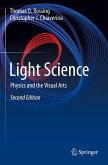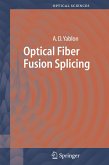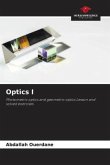A detailed and comprehensive account of the engineering of the world's first nonimaging Fresnel lens solar concentrator. The book closes a gap in solar concentrator design, and describes nonimaging refractive optics and its numerical mathematics. The book shows the reader how to find his or her own optical solution using the rules and methodologies covering the design and the assessment of the nonimaging lens.
Nonimaging Fresnel Lenses: Design and Performance of Solar Concentmtors; what are we talking about? It is easy to forget that you, dear reader, may not be one of those who work inexactly the same field as we do: nonimaging optics for the concentration of sunlight. You may be a researcher in some optical science interested in the core subject of this book: the world's first practical design of a nonimaging Fresnel lens concentrator. You may not be too excited about the collection of solar energy, but you would want a fuB description of the optical performance of the lens. Which you will get, mostly in terms of nonimaging optics, complete with test results, and set against the competition of imaging Fresnel lenses and mirror-based imaging and nonimaging concentrators. If you are a solar energy professional, you are likely to be interested in reading why nonimaging optics and solar energy coBection go together so weB. They do so, because the concentration of solar energy does not demand imaging qualities, but instead requires flexible designs of highly uniform flux concentrators coping with solar disk size, solar spectrum, and tracking errors. Nonimaging optics has been developed to perfection since its discovery in 1965, in dealing with solar power conversion. Much of this experience is useful in nonimaging optical design in other fields where the markets already are more rewarding than in solar power generation, such as optoelectronics.
Nonimaging Fresnel Lenses: Design and Performance of Solar Concentmtors; what are we talking about? It is easy to forget that you, dear reader, may not be one of those who work inexactly the same field as we do: nonimaging optics for the concentration of sunlight. You may be a researcher in some optical science interested in the core subject of this book: the world's first practical design of a nonimaging Fresnel lens concentrator. You may not be too excited about the collection of solar energy, but you would want a fuB description of the optical performance of the lens. Which you will get, mostly in terms of nonimaging optics, complete with test results, and set against the competition of imaging Fresnel lenses and mirror-based imaging and nonimaging concentrators. If you are a solar energy professional, you are likely to be interested in reading why nonimaging optics and solar energy coBection go together so weB. They do so, because the concentration of solar energy does not demand imaging qualities, but instead requires flexible designs of highly uniform flux concentrators coping with solar disk size, solar spectrum, and tracking errors. Nonimaging optics has been developed to perfection since its discovery in 1965, in dealing with solar power conversion. Much of this experience is useful in nonimaging optical design in other fields where the markets already are more rewarding than in solar power generation, such as optoelectronics.

